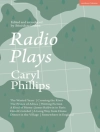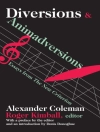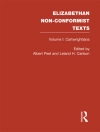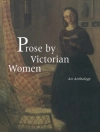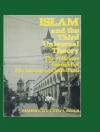European Erotic Romance examines the Renaissance publication and translation of the ancient Greek erotic romances, and English adaptations of the genre by Sir Philip Sidney, Shakespeare and Lady Mary Sidney Wroth.
Providing fresh insight into the development of the novel, this study identifies the politicisation of erotic romance by the European philhellene (lovers of all things Greek) Protestant movement. To English translators and authors, the complex plots, well developed moralised characters (particularly female) and rhetorical styles of the ancient novels signify political and social reform.
Generous quotation and translations ensure that European Erotic Romance is accessible to a broad spectrum of readers. Its organisation lends itself to use as a course text. It is suitable for use by senior undergraduates and specialists in Renaissance literature, translation, rhetoric and history.
Tabella dei contenuti
Introduction
Part One: Greco-Roman Romance in the Renaissance
1 The Nature of Erotic Romance
Greco-Roman Romance of the Second Sophistic and the Renaissance
Aphthonius, Philostratus, Ecphrasis and Artistic Style
Characterisation: Theophrastus and Plutarch
Philhellenism and the Allegorical Politicisation of Erotic Romance
2 Longus’s Daphnis and Chloe
The Novel as Ecphrasis
Amyot, Translation and the Kings of France
Reading, Education and Translation
Translating Erotic Romance
Angel Day, The Shepheards Holidaie and Accession Day, 1587
The Shepheards Holidaie, Court Drama, and Court Poets
Translating Eros: Amyot, Day and Thornley
George Thornley’s Itch
Angel Day and Dionysophanes’ Garden
The End: Nothing But Shepherds’ Games
Conclusion
3 Achilles Tatius’s Leukippe and Kleitophon
Rhetorics of Love
European Dissemination
Belleforest’s French
Burton and the English Philhellenes
Hodges, Erotic Arousal and Sidney’s Arcadia
Translating the Opening
Europa: An Ecphrasis
Europa and Apparent Cyclic Form
Kleitophon and Characterisation
Kleitophon’s Symbolic Dream
Kleinias on Love, Sex and Marriage
Kleitophon’s Garden
Pantheia’s Dream
Debate on Erotic Love
Sexual Predation
Melite and Thersandros
The Trial and Conclusion
Conclusion
4 Heliodorus’s An Ethiopian Story – Theagenes and Charikleia
Charikliea: Royal Foundling
Renaissance Continental Translations and Philhellene Politics
Sandford’s Historie of Chariclia and Theagenes
Underdowne’s An Aethiopian Historie
Fraunce, L’Isle and Gough
Exemplary Characters and Moral Lessons
Heliodorus’s Political Romance
Homeric Beginnings
The Insatiable Demainete
Thyamis’s Erotic Dream
Thyamis’s Priestly Family
Rhodopis: Kalasiris’s Nightmare
Heliodorus’s Cyclic Tales
Leadership and the Law
Thyamis Justified
The Wanton Arsake
The Wicked Kybele
Recognising Charikleia
Language and Nationalism
L’Isle’s Political Panegyric
Conclusion
Part Two: Philhellene Erotic Romance
5 National Romance and Sidney’s Arcadia
Political Outlines
Selective Monarchomachia
Evolution of Arcadia
Unfolding the Epic Cycle
Sub-Plot and Exemplary Character
Philisides and Tiltyard Masquing
Costume, Device, and Narrative Strategy
Philoclea’s Bed
Eroticising Renaissance Romance
Erotic Romance and Erotic Sex
Interest Theory, Philhellene Politics, and Erotic Romance
The Novel as Theatre
Legal and Political Process as Drama
The End of Romance
Conclusion
6 Shakespeare and Philhellene Erotic Romance
Shakespeare, Amyot and North’s Plutarch
Amyot-North Diction and Style in Coriolanus (1608)
Julius Caesar (1599), Political Identifiers and the Rhetorics of Erotic Romance
Antony, Cleopatra, Octavius and the Huguenots
Greville’s Antony and Cleopatra: Politics and Anti-Romance
Panegyric in Antony and Cleopatra (1606): the Rewards of Patronage
The Winter’s Tale (1609-10): Exemplary Rapprochement
Jealousy, Tyranny, and the Aggressive ‘Royal’ Style
Gendering Rhetorics: Thucydides and the Ermine
Erotic Closure
Cymbeline (1609-10), Rhetorical Style and the Catholic Disjunction
Conclusion
7 Mary Sidney Wroth’s Urania
Philhellene Protestant Erotic Propaganda
Disjunction at the Throne of Love
A French Story
The Dispossessed: Urania’s Misery
Theatres of Romance
Interest Theory Personalised
Techniques of Elision
Allegorical Parallelism
Urania as Anti-Romance
The Great Cham and His Dynasty
Urania as Roman à Clef
The Metamorphosis of Mary Sidney Herbert
Truth and Illusion
Rodomandro’s Masque
Female Abuse and Martyrdom
Hereditary Succession and Restoration
Liberation, Restoration and Marital Union
Meriana and the Macedonian Succession
Romania Allegorised
Closing the Sophistic Circle
Urania as Sophistic Erotic Romance
Conclusion
Chapter 8
The Fate of a Genre
The Semiotics of Erotic Romance
Conclusion
Bibliography
Index of Place-Names
General Index
Circa l’autore
J.B. Lethbridge is Lecturer in English at Tübingen University
J. B. Lethbridge is Lecturer in English Literature at Tübingen University


